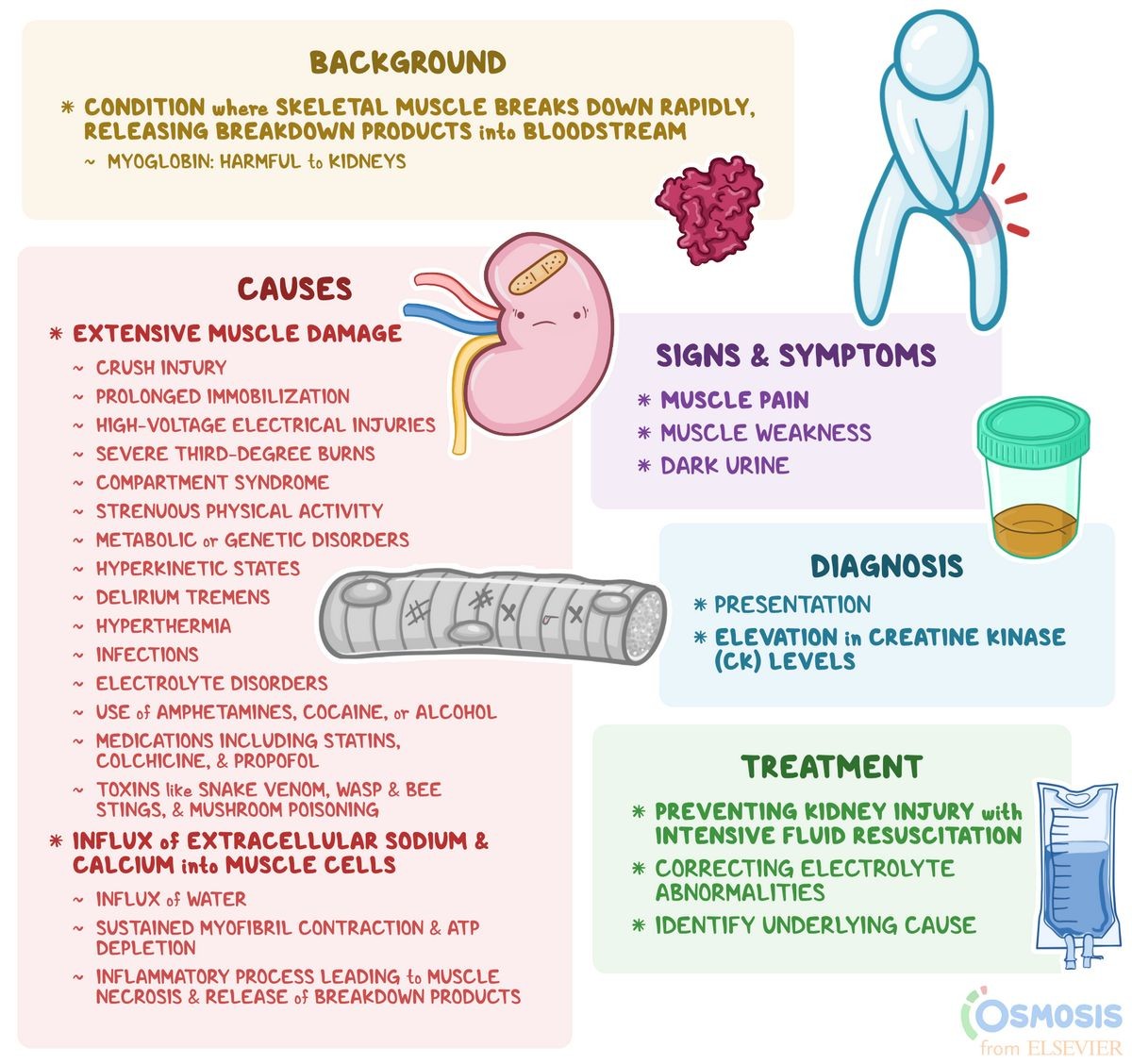
Rhabdomyolysis is a condition where skeletal muscle cells break down and their contents enter the bloodstream, causing issues with electrolyte balance, dehydration, acid-base balance, heart rhythm, and kidney function.
There are three types of muscle in the body: smooth muscles, cardiac muscles, and striated muscles.
Rhabdomyolysis is defined as damage to striated muscles, with "rhabdo" meaning striped or striated, "myo" meaning muscle, and "lysis" indicating cell disintegration due to cell wall damage.
The most common causes of rhabdomyolysis include trauma, direct muscle injury, and intense, prolonged exercise. Traumatic events can result in direct or interrupted blood supply to the muscles. Strenuous exercise, especially when the body is unaccustomed to it, can also cause muscle damage. Other causes include high heat and humidity, restricted clothing, certain medications, genetic muscle abnormalities, and endocrine diseases like diabetes and thyroid disorders.
Dehydration itself is not a cause of rhabdomyolysis, but it can exacerbate complications when muscle damage occurs.
The classic symptoms of rhabdomyolysis are muscle pain, weakness, and dark-colored urine. Additional symptoms may include nausea, vomiting, malaise, and exhaustion.
Symptoms can appear immediately or be delayed by hours or days after exercise, with changes in urine color being a key indicator.
Diagnosis of rhabdomyolysis involves a careful assessment of symptoms and history, as well as blood and urine tests. Creatine phosphokinase (CPK) levels will be elevated, particularly CPK-MM, which is found in skeletal muscle. Urinalysis will show myoglobin in the urine.
Treatment for rhabdomyolysis is supportive, focusing on intravenous fluids to ensure hydration and minimize kidney injury. Treating the underlying cause is also necessary.
Mild cases may only require oral rehydration, while more severe cases may require hospitalization.
Complications of rhabdomyolysis include acute kidney injury, heart rhythm disturbances, compartment syndrome, and disseminated intravascular coagulation (DIC).
The prognosis for rhabdomyolysis is usually favorable with prompt diagnosis and treatment. However, hospitalization may be required in some cases.
Prevention involves gradually increasing exercise and work activity levels, listening to the body, minimizing heat exposure, wearing appropriate clothing, staying hydrated, and being mindful of medications and illnesses that can contribute to rhabdomyolysis.
In conclusion, rhabdomyolysis is a condition characterized by the breakdown of skeletal muscle cells, which can cause various complications. Prompt diagnosis, treatment, and prevention strategies are essential in managing this condition effectively.


